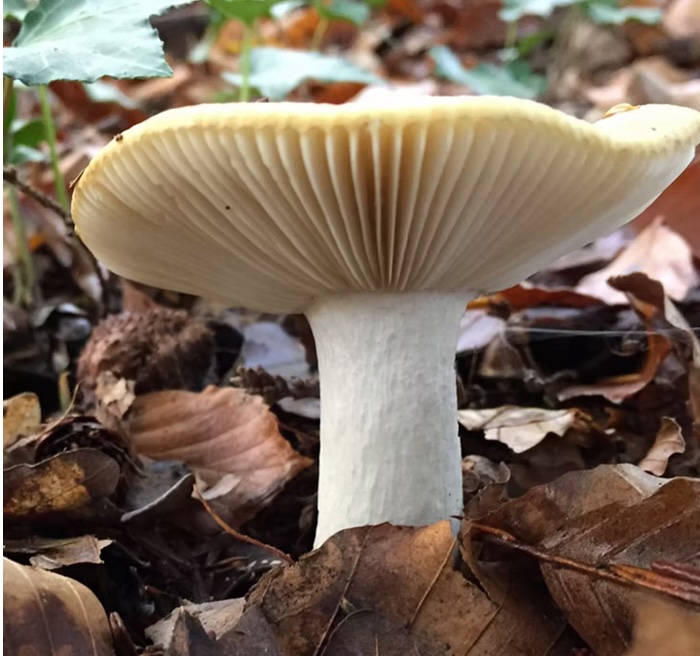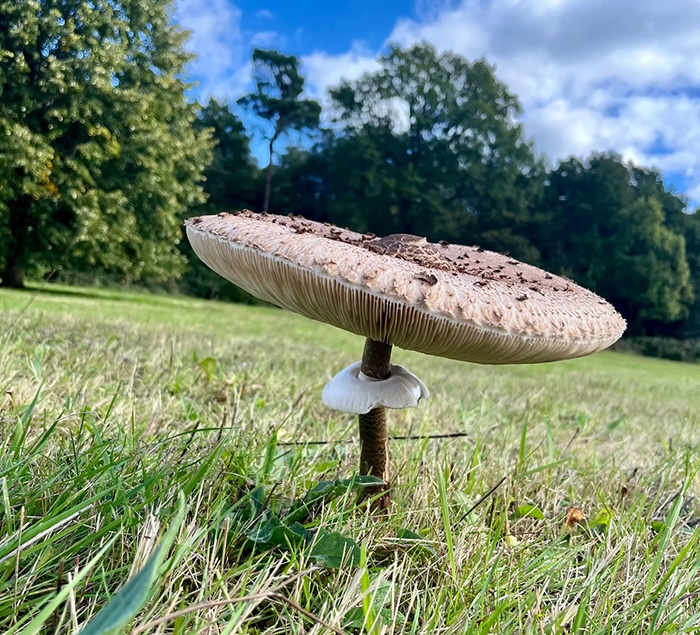
Fungus fun – try our quiz
We missed UK Fungus Day on October 4, but we’re still in time for International Mushroom Day next Wednesday – it’s the month for foraging for favourite fungi.
But how much do you know about mushrooms, toadstools and other mycological growths?
Fungi come in all shapes and sizes from the traditional toadstools like the red and white fly agaric and amethyst deceiver and to the bizarre elfin saddles and tiny bird’s nest fungi.
There are more than 15,000 species in the UK. Neither plant, nor animal, they make up an entire kingdom of their own.
Fungi also include some of our most poisonous species. Often aptly named such as the sickener, poison pie, death cap and the destroying angel, they can be tricky to identify so never eat any fungi you find unless you are 100% certain.
The British Mycological Society works to highlight the importance of fungi to our lives – did you know, for example, that without fungi life on earth would not exist? Their recycling activities ensure nutrients are fed to the world’s ecosystems.
The society has come up with a quiz to test and inform us about these important organisms.
- In 1991 the body of a man from over 5300 years ago was found frozen in the Alps. There were pieces of fungi amongst his belongings. What‘s his name?
- What fungus sold for £160,000 in 2007?
- Which Roman Emperor was allegedly poisoned by his wife using a bowl of mushrooms?
- The earliest fossil fungi known are estimated to be 715-810 million years old. In which country were they discovered?
- What has Vegemite got to do with fungi?
- What’s the blue in Stilton cheese?
- What high protein vegetarian food is made from the fungus Fusarium venenatum?
- What type of mushroom is sliced, dried and sold in shops as porcini?
- In which classic Jules Verne novel does a group of explorers discover a large underground cavern containing giant mushrooms?
- Which 2019 film, starring Angelina Jolie, begins with 3 dodgy-looking characters trying to capture mushroom fairies in the dead of night?
Answers
- Otzi the Iceman: The fungi were the Birch Polypore, Piptoporus betulinus and Hoof fungus, Fomes fomentarius - the former for its styptic and medicinal qualities and the latter as tinder for lighting a fire. More information: https://www.iceman.it/en/oetzi/the-iceman
- White Truffle (Tuber magnatum): This 1.5 kg truffle was found by a truffle hound in Tuscany but sold at a charity auction in Macau. It was bought by billionaire Macau casino owner Stanley Ho. Bidding was linked between London, Florence and Macau. The high price it achieved was probably due to the shortage of truffles after a dry summer, and the fact that it was a charity auction. More information: https://www.theguardian.com/uk/2007/dec/02/world.italy
- Claudius: There’s some dispute amongst historians as to the cause of Claudius’s death. Some report that it was a bowl of mushrooms provided by his wife, Agrippina, but accounts differ. And some believe he wasn’t murdered at all.
- Democratic Republic of the Congo: Microfilaments and mycelium-like structures were found in Neoproterozoic dolomitic shale. Fluorescent microscopy was used with a chemical that binds to chitin (the main component of fungal cell walls) to show that these were fungal rather than bacterial in origin. More information: https://sciencythoughts.blogspot.com/2020/04/fungi-from-neoproterozoic-of-democratic.html
- It’s made from yeast, a single-celled Ascomycete fungus Yeast is also used in the production of beer and bread. Vegemite is made from waste yeast from the brewing industry (see also Marmite). Yeast cells are broken down by autolysis and turned into an extract. It is high in B vitamins and glutamates, the latter giving it the umami flavour. See: https://en.wikipedia.org/wiki/Vegemite
- Penicillium roqueforti: Penicillium roqueforti is a saprotrophic fungus (mould) that can tolerate cold temperatures, low oxygen levels and weak acid or alkaline environments making it ideal for the dairy industry. However, it can also grow on - and spoil - refrigerated food such as meat and bread, and it can be a problem contaminant in silage. The fungal culture is added to the curd in the cheese- making process then, as the cheese matures, it is pierced with needles or wires. This lets in oxygen, allowing the mould to grow from the inside out, and producing the blue green “vein” appearance. See: https://rennetandrind.co.uk/blogs/perrys-blog/how-does-blue-cheese-become-blue
- Quorn: Fusarium venenatum is a filamentous fungus that was originally selected from fungi growing in soil (in Marlow, Buckinghamshire, UK). It is grown in large vats in a fermentation process somewhat like a brewery, with the mycoprotein extracted and turned into the product. See: https://www.quornnutrition.com/mycoprotein
- Penny bun or cep Boletus edulis: Technically, Boletus edulis is a basidiomycete bolete fungal fruiting body, but is more commonly called a mushroom. It is mycorrhizal, forming associations with deciduous and coniferous trees. This species has pores rather than gills and can be recognised by its brown cap and white, club-shaped or bulbous stipe. See: https://en.wikipedia.org/wiki/Boletus_edulis
- Journey to the Centre of the Earth: The fungi in this book are described as being 30 feet tall with equally large caps so close together that no light could penetrate beneath them. Jules Verne had a vivid imagination! See: https://www.online-literature.com/verne/journey_center_earth/30/
- Maleficient 2: Mistress of Evil: According to mycologists, no fungi were damaged or mistreated in this film See: https://maleficent.fandom.com/wiki/Button


